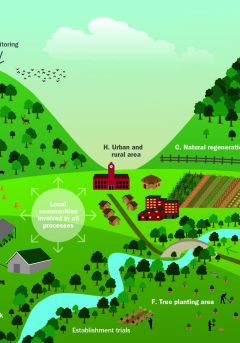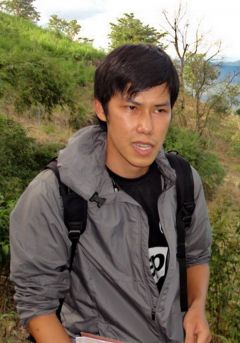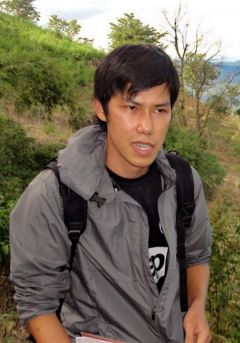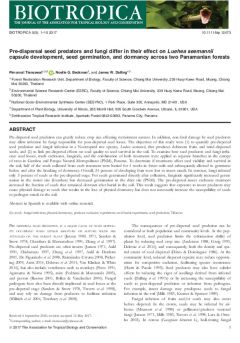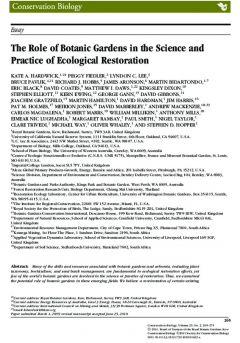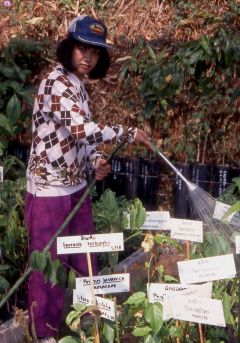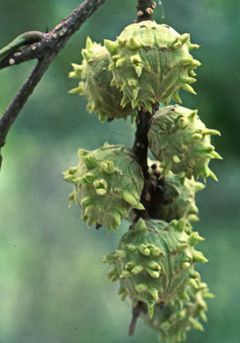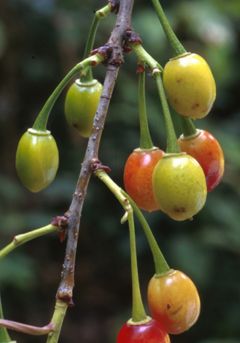Publications
1: Ten guidelines for tree planting initiatives to optimise carbon sequestration, biodiversity recovery and livelihood benefits
ABSTRACT: Urgent solutions to global climate change are needed. Ambitious tree‐planting initiatives, many already underway, aim to sequester enormous quantities of carbon to partly compensate for...
2: Seed storage behaviour of native forest tree species of northern Thailand
ABSTRACT: Storage of native forest tree seeds is essential for the development of seed-based forest restoration methods, such as direct or aerial seeding and for increasing representation of...
3: Sowing time and direct seeding success of native tree species for restoring tropical forest ecosystems in northern Thailand
ABSTRACT: Direct seeding (sowing seeds directly into ground) is potentially a cost-effective method of forest restoration that could replace or complement conventional tree planting, under certain...
4: Pre-dispersal seed predators and fungi differ in their effect on Luehea seemannii capsule development, seed germination and dormancy across two Panamanian forests
Pre-dispersal seed predation can greatly reduce crop size affecting recruitment success. In addition, non-fatal damage by seed predators may allow infection by fungi responsible for post-dispersal...
5: The role of botanic gardens in the science and practice of ecological restoration
ABSTRACT: Many of the skills and resources, associated with botanic gardens and arboreta, including plant taxonomy, horticulture and seed bank management, are fundamental to ecological restoration...
6: Producing Framework Tree Species for Restoring Forest Ecosystems in Northern Thailand
Abstract: Since 1994, the Forest Restoration Research Unit of Chiang Mai University’s Biology Department (FORRU-CMU) has been developing methods to restore forest ecosystems to deforested sites...
7: Genetic variation of Prunus cerasoides D. Don, a framework tree species in northern Thailand
Prunus cerasoides D. Don has been identified as an excellent ‘framework tree species’ for restoring evergreen forest in seasonally dry tropical forestlands. Here we describe the level of...
8: Genetic diversity of Castanopsis acuminatissima (Bl.) A. DC. in northern Thailand and the selection of seed trees for forest restoration
ABSTRACT: Castanopsis acuminatissima (Bl.) A. DC. is one of several "framework species", which are being planted to restore seasonally dry tropical forests in northern Thailand. This study...
9: Selection of Prunus cerasoides D. Don seed trees for forest restoration
ABSTRACT: Prunus cerasoides D. Don has been identified as a ‘framework species’ for restoring evergreen forest in seasonally dry climates. The aim of this study was to develop criteria to select...
10: Selecting seed trees for a forest restoration program: a case study using Spondias axillaris Roxb. (Anacardiaceae)
Spondias axillaris Roxb. (Anacardiaceae) (synonym: Choerospondias axillaris (Roxb.) Burtt and Hill) is an exceptionally effective framework tree species for restoring seasonal tropical forest...
-
- 14: 13
- 13: 6
- 15: 6
- 34: 3
- 36: 3
- 12: 2
- 16: 2
- 33: 1
- 39: 1
- 40: 1
- 41: 1
-
- 28: 13
-
- 48: 10
- 21: 5

